Confronting 'Europe' in a Globalised World
As part of the closing conference in Pretoria, UACES is hosting an exhibition of creativity. the artworks consider the questions
Do you have views on Europe’s role in the world and the way in which the ‘idea’ of Europe is propagated? Where does it come from? How does it persist? How can it be challenged? Do you have an interest in Europe or European issues? Do you think they are important in a global context? Or, on the other hand, does the continued narrative of (Western) Europe as a dominant cultural and political force in the world feel outdated to you?
The winner and runner-up are listed first and the other submissions are listed alphabetically by the artists' last names below.
Afternoon Tea by Mpho Jacobs - WINNER
Afternoon Tea is an artwork that depicts an old woman sitting in a garden and having her daily afternoon tea session. Growing up, I was quite fascinated by my great-grandmother who always wanted to have tea every day, no matter how hot it was. It was an unusual habit to witness, but as I learnt more about South Africa’s history having once been a British colony, the culture of tea drinking seemed to make more sense. At the same time, it did not, as to drink a hot beverage while the heat of the African sun blazed during the afternoon, it was now a habit, almost a tradition my great-grandmother had. It is one of the things that made me aware that even when colonialism had parted ways with certain countries such as South Africa, there were still cultural habits that continue and are incorporated into the habits of some indigenous people. Westernisation has become a symbol of modernity, and in even the minor daily tasks some people have these influences mixed with their background and culture to form their reality.
Mpho Jacobs is a painter and digital artist from Pietermaritzburg, South Africa, who is studying Visual Communication Design at the University of Stellenbosch. Mpho’s artworks showcase her emotional experiences by incorporating realism with symbolic motifs and her learning of art history over the years. She is inspired to amplify subjects that she has grown up not seeing enough of within art: black individuals, and women.
Instagram: @mphojacobsart
Twitter: @mphojacobsart
Facebook Page
Ardhanarishvara Exhibit By Kiveshan Thumbiran - RUNNER-UP
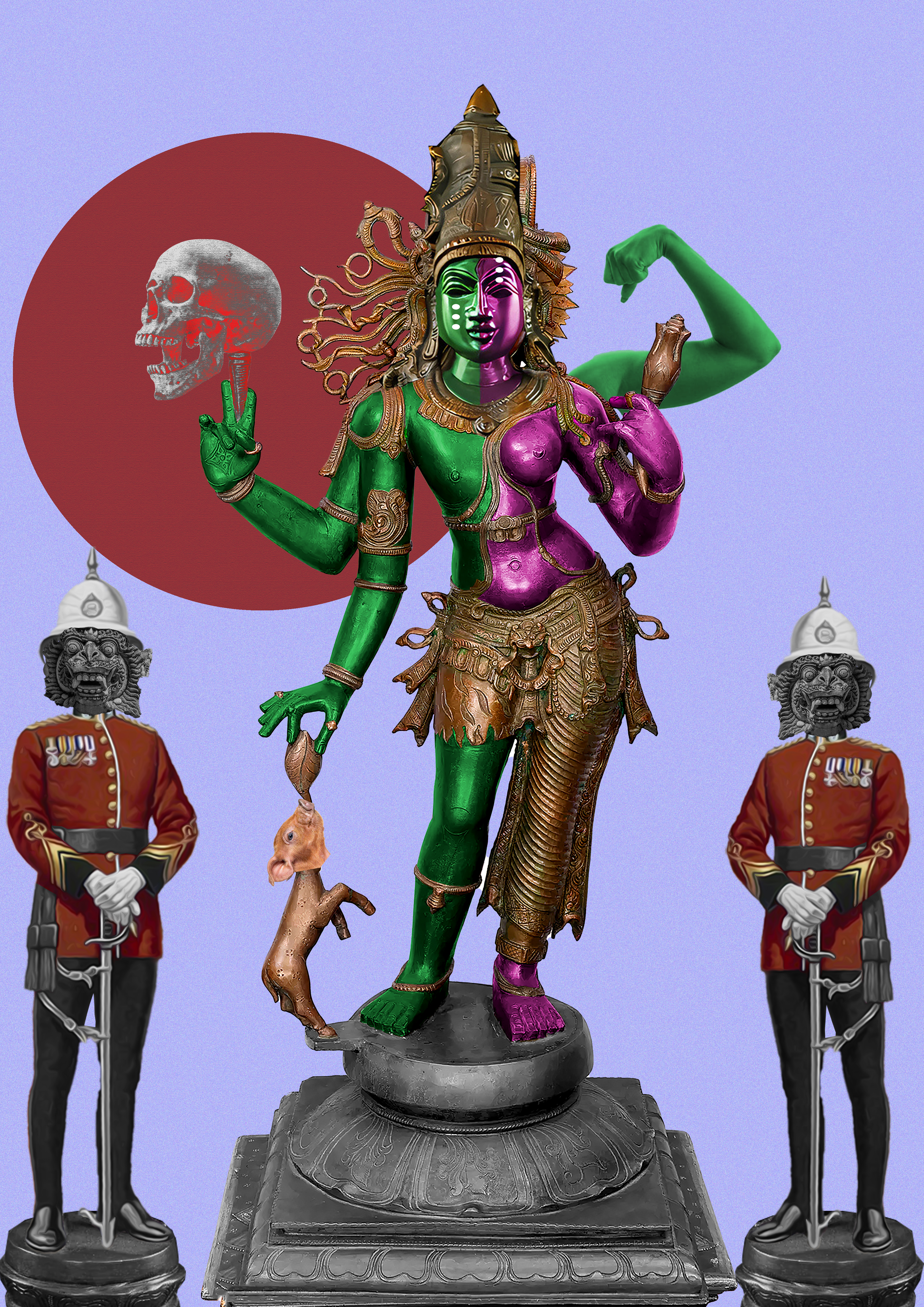
If one is to contextualise the idea of Europe’s role in the world, I, as a South African Indian person, stand as a living proof of its role. I am the descendant of Indian indentured labourers brought to South Africa as workers for the sugarcane plantations in 1860 by the British, who then lived under Apartheid under the Dutch descent Afrikaners.
To myself, the narrative of Europe does not hold much interest as I still see them as not only a continued Western force, but still as an antagonist. My research focuses on the displacement of the Indian body in South Africa as being othered by other races within the country. I always view the West via Edward Said’s ideas expressed in his book Orientalism (1979).
This quote from Said (1979:11) most eloquently depicts my views:
“I doubt that it is controversial. for example, to say that an Englishman in India or Egypt in the later nineteenth century took an interest in those countries that was never far from their status in his mind as British colonies.”
This inspired the first work titled: Ardhanarishvara exhibit (Fig1). The work makes use of the Hindu deity Ardhanarishvara who represents the male and female energies that make up all of existence and cannot exist without the other. In this work they represent the Indian people who were colonised by the British for financial gain. The British are represented as Dvarapalas or temple guardians who are clad in the East India company uniform. The idea of this relationship comes from the Hindu temple in which one cannot enter a temple without praying to its guardian. Similarly the person of colour is constantly being told to thank the European for their current position in the world as though they were saved by the coloniser.
Kiveshan Thumbiran received his National Diploma, Baccalaureus Technologiae and M-Tech in Visual Art at the University of Johannesburg, where he was also the coordinator of the New Media Studies course. He has lectured at the University of Johannesburg and is currently a lecturer and researcher at Stellenbosch University. He is also a practicing artist whose work and research currently looks at himself as diaspora of Indian migrants (both indentured and non), and tries to determine the position of the “Indian body” in contemporary South Africa. He asks the question, ‘Who are Indians and why do we not belong?’
Gods of PreTshwane by Sue Clark
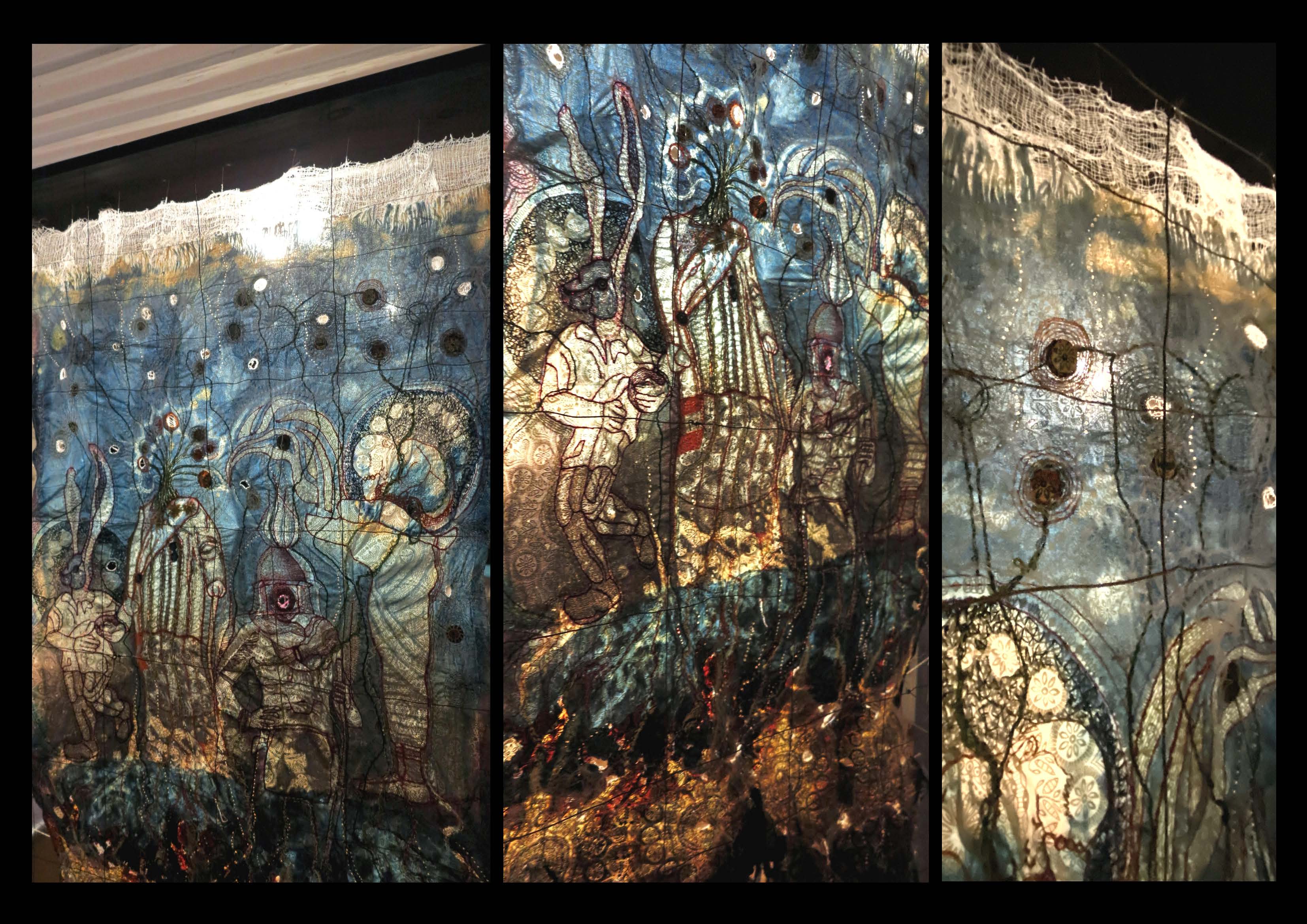
As a local resident, I am fascinated by the built environment of Pretoria/Tshwane including monuments and predominantly male statues. My work layers memories represented in public-art and buildings with contemporary imagery imagining future potential. The notion of a monument as a permanent memory is a western concept. In retrospect, most memories are questionable, and the relevance of monuments is being contested globally.
The post-apartheid name-change from Pretoria to Tshwane continues to be confusing. I play with a hybrid name, PreTshwane, signifying the state of limbo between what was Pretoria but is not yet Tshwane. This name suggests that collective memories can be altered, not only through the physical artefacts themselves, but their renaming.
Four hybrid-gods evolve out of existing statues, decaying buildings, nature, occupants, and other symbols. These “gods” represent the entangled lives, hopes and memories that represent a future enmeshed society. The dominance of past harsh patriarchal presence is gently erased to form a more representative flexible future.
Valia Magna by Dr Despoina Kotsi
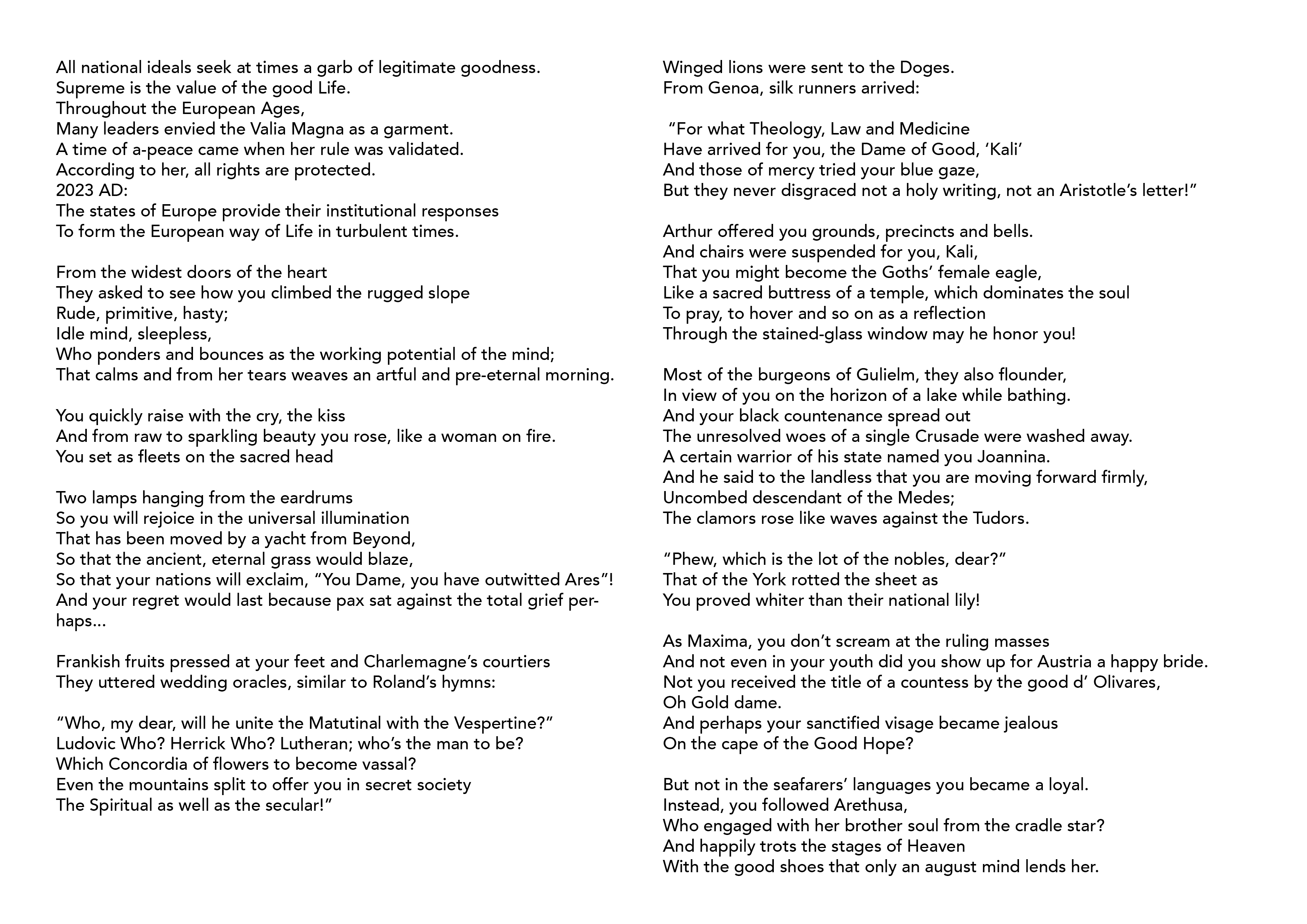
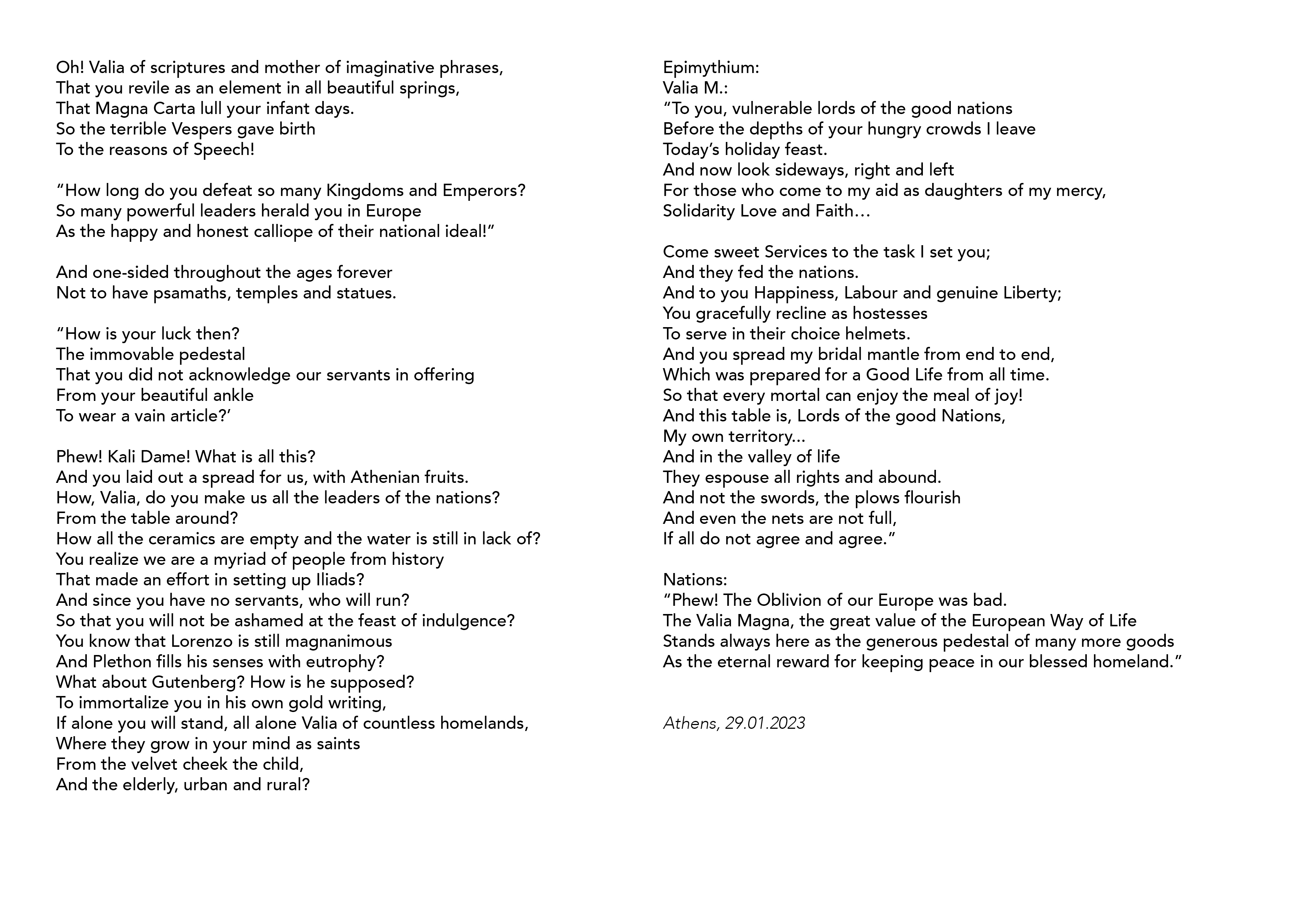
A Dog with a Bone by Mthunzi Mdlovu
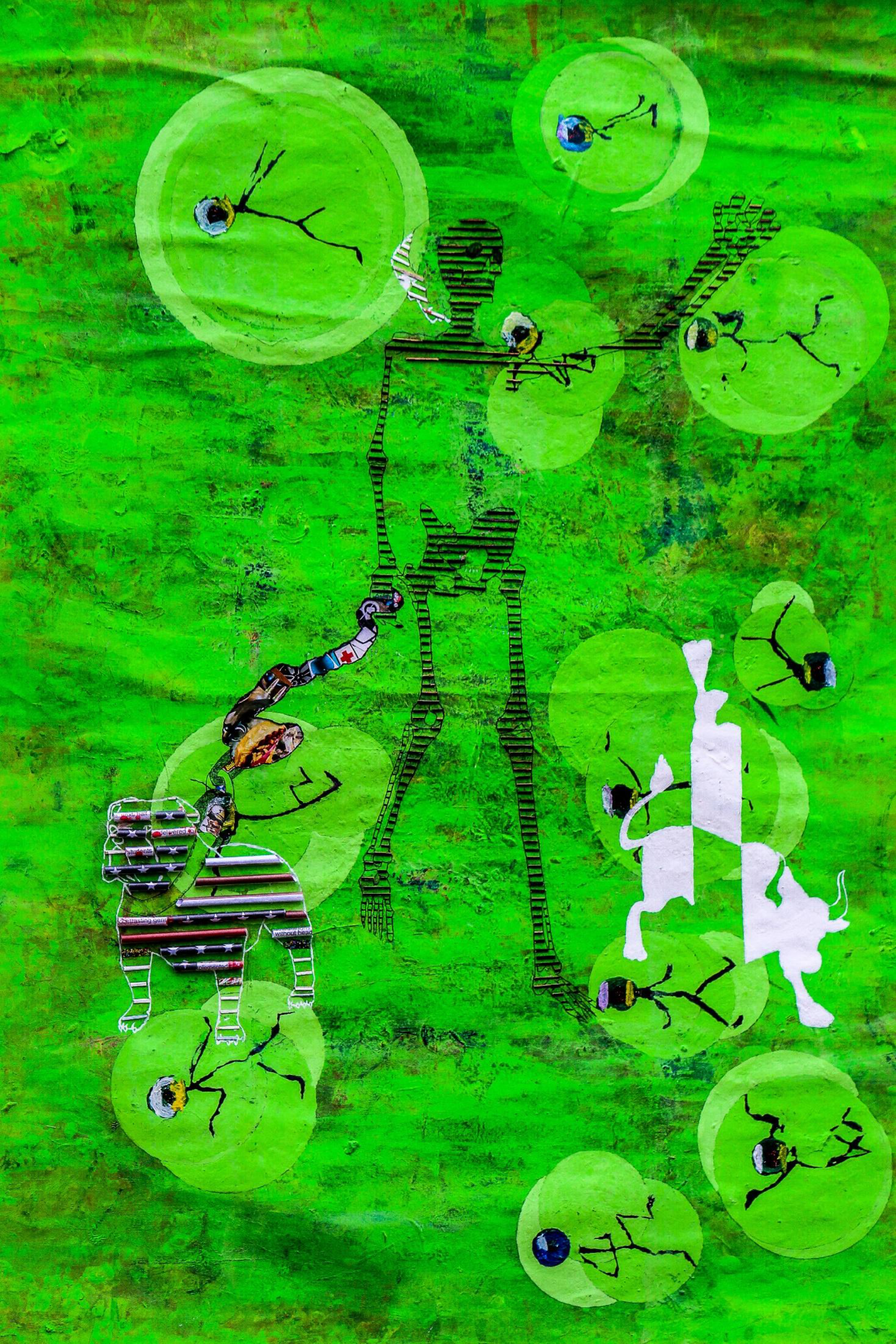
The work has developed through my practice and gave rise to meta-language of using line bars to protect and lock my thoughts within myself as this is not a public tool of communication that we can all understand. These aspects of my own practice were incorporated into the piece dedicated to this project of confronting Europe.
European culture keeps spreading itself on the surfaces of our lives like green chloroplast in our plants. Living behind a hybrid culture that haunts (seeds) our children viciously into habits unknown in African value systems, as we have been witnessing American bulldogs devouring young ones.
We Are All White Deep Down by Mthunzi Mdlovu
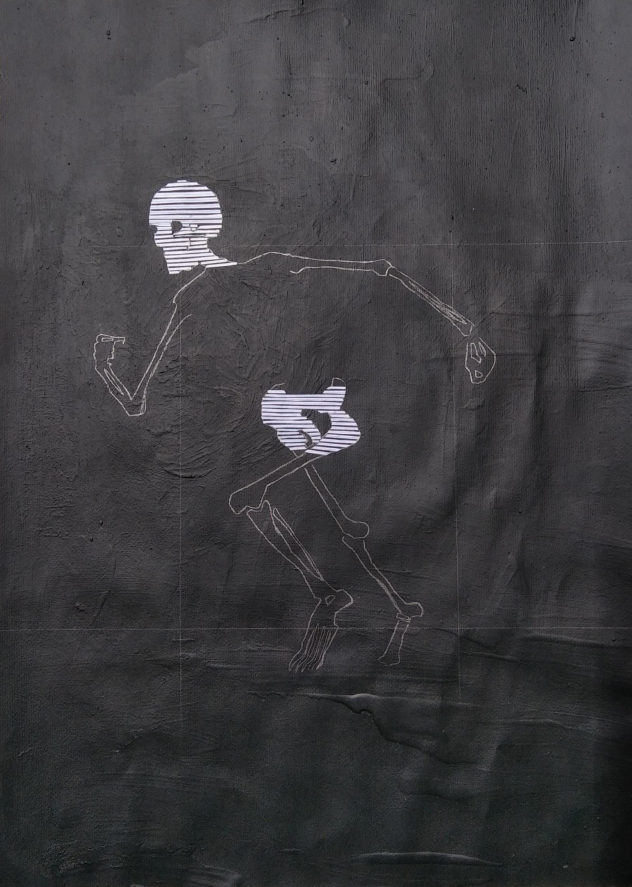
The work is Influenced by Luweero Triangle if 1986, where people who collected thousands of skulls after the mass atrocity of Obete’s regime. These humans structures were “displayed in tables and beneath trees, everywhere in Luweero as a silence memorial” (Kasfir : 2012).
These pills of dead skulls were part of daily scenes/dialogue for locals. Skinless bones that have no immediately recognisable boundaries such a race and class resonated with how a cosmopolitan individual might need this ambiguous state of identity to disempower tribalistic ways of seeing ourselves.
My work predominantly focuses on dilemmas of language hence, I use to construct realistic images of people for example, I would draw a Nguni person using Zulu language words. Through intense years of studio work and negotiations with cultures, I have come to realise that what I thought to be my language, was in fact inherited. This led me to develop a personal motif of using line bars as my own meta language that speaks about the vagueness of being a hybrid individual in a “third spaces” (Bhabha : 2009). The skinless skulls try to create a space for us imagen beneath our innate political coats, that deep down we are the same. Blindly reminding us that we are all white deep down in our bones.
Though the work is influenced by historical narratives of ruthlessness and power domination. It does not disregard the sensitive social issues haunting our contemporary life, but it optimistically twists the narrative in effort to cue some racial tensions as we deconstruct history.
The work in its authoritarian nature tries to reinforce a fresh attitude to save those who revisit history and sanitise them to not bring old spirits into a new world
Eat, Pray, Love to Make Money By Kiveshan Thumbiran
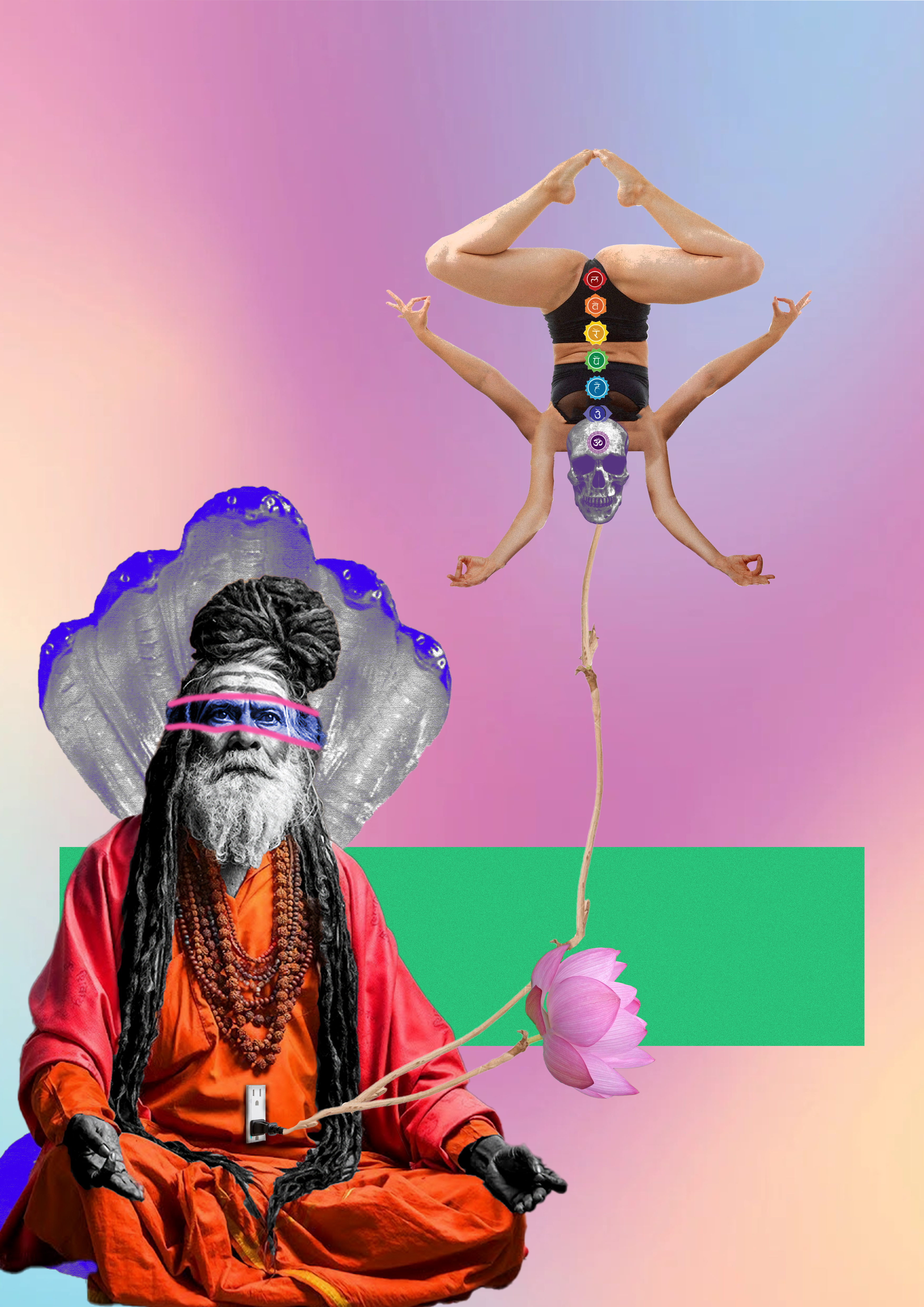
This work looks at a more contemporary issue surrounding “ethnic” cultures and continued exploitation by the West. Titled: Eat, Pray, Love to make money (Fig2), this work looks at how things that are exclusively Indian are exploited by Western forces for financial gain – the example here being Yoga. Originally, a practice by the Hindu God Shiva as a form of meditation, the practice is now packaged and sold in the West by white people who claim to have learn the arts from “Gurus” in India. The imagery behind this work is inspired by the Hindu deities Vishnu (the preserver) and Brahma the Creator. It is said that when Vishnu materialised, from his navel came a lotus flower, and that flower contained Brahma who was tasked with creation of the universe. Brahma refuses to accept that Vishnu is his progenitor and attempts to say that he created himself. In the work a stereotypical image of a “Guru” gives birth to a white woman who has convinced herself of spiritual power and self-creation.
My visual research makes use of my own religion (Hinduism) as a means of engaging with my surroundings as I grew up with my grandparents who used the religion as a tool to help me understand the world.
Flags of our Fathers by Eduard Albertus van Wyk
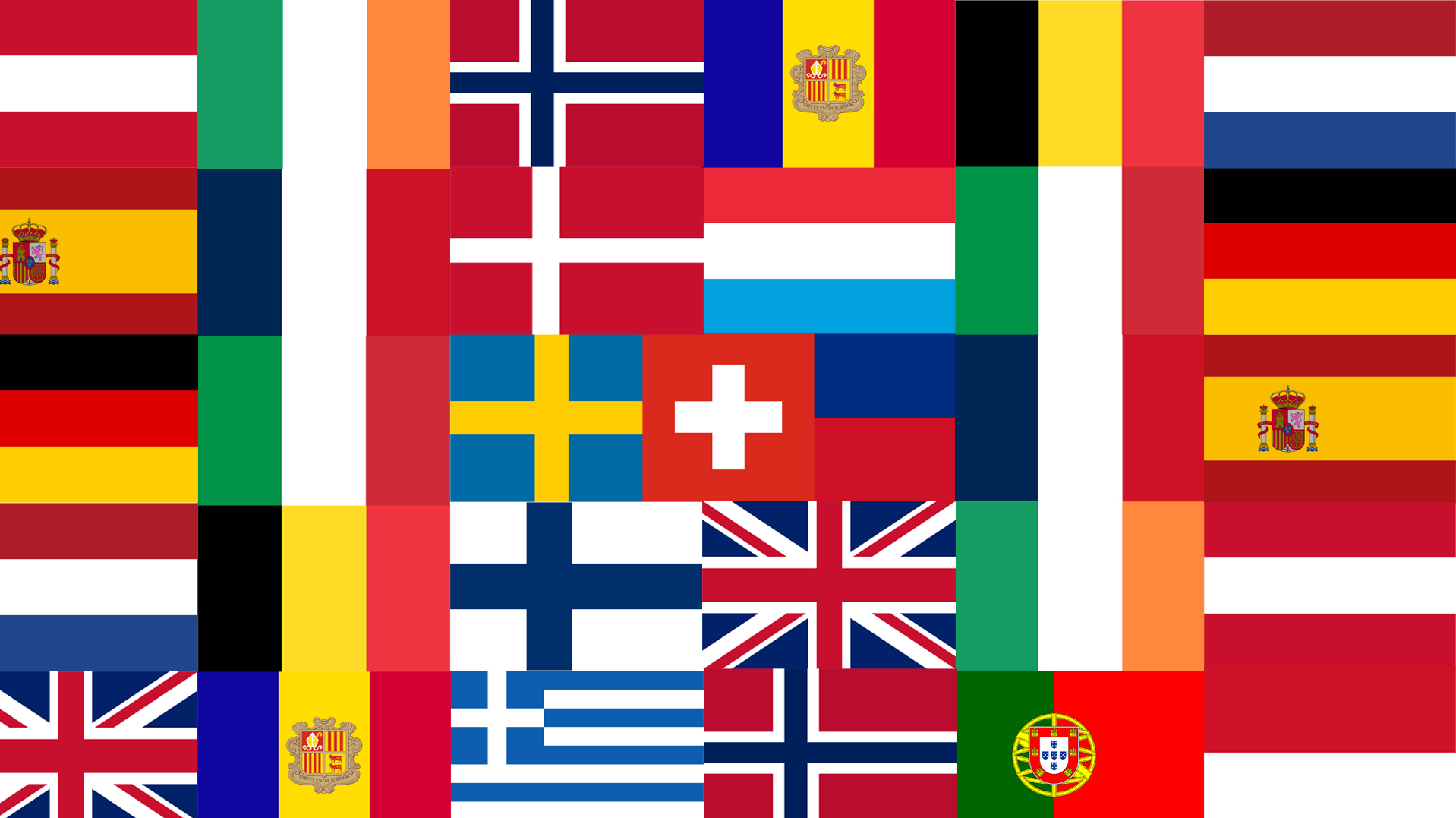
The following artwork is a digital collage of Western European countries. Is titled, ‘Flags of our Fathers’. Now, to answer some of the questions listed. I believe that Europe is still very much a force to be reckoned within the present day, if you look at the currency for example versus the ZAR (South African Rand). Further, I certainly have an interest in European rather than American issues and watch European news regularly. It interests me more, knowing that my forefathers came from Europe. I have a longing to return and live there myself in the near future. Furthermore, I don’t think that the continued narrative of (Western) Europe as a dominant cultural and political force in the world is outdated at all. In fact, it could be argued that this dominance has grown over the past few decades specifically. I’d rather have Europe as a dominant (Western) force than America. The collage, emphasizes the beauty of diversity within Europe, specifically (Western) Europe for this entry. Through showcasing a combined flag as a celebration of its Union and strength. I conclude, that ‘Flags of our Fathers’ can be seen as a homage to a Union that has shaped our contemporary world tremendously and to this day plays an important role in forging our societies on planet Earth.

